Architectural Digest: Rangoon Adventure
By Stephen Brookes
Architectural Digest, August 2000
Patrick Robert is standing at the edge of his lush, monsoon-soaked garden, looking up into a mango tree and laughing. "I have been all over the world," he says, "and Burma is the only country where the chickens live in the trees." He points upward, where two small black hens and a rooster are strutting back and forth on a branch high overhead. "Sometimes they are noisy in the morning with making love, but...." He gives a Gallic shrug. Amorous, arboreal chickens are just another odd and unexpected pleasure of life in Rangoon.
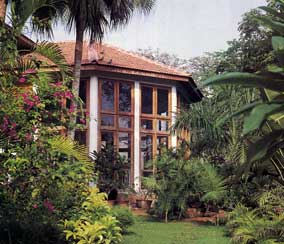
Photographs by Barry BromanAlthough Burma (also known as Myanmar) has begun opening its doors to the outside world in the last few years, few visitors have made the trip, and fewer still have decided to stay. Life in Rangoon is not for the timid or the conventional; isolated for decades under a xenophobic regime, much of the late Twentieth Century passed Burma by, and many of the conveniences of modern life are still lacking.
But for those with an adventurous or romantic streak, Burma's long isolation makes it irresistible. Rangoon remains a city lost in time, where elegantly crumbling colonial villas sit side-by-side with gingerbread Burmese houses and ancient teak monasteries. In the rural countryside life goes on as it has for centuries, and there are pagodas everywhere -- some tiny, others majestic and austere -- that give Burma perhaps the most beautiful and enchanting landscape in Asia. The outsiders drawn to Burma tend to be explorers, pioneers, dreamers -- or, like sixty-year-old French designer Patrick Robert, a combination of all three.
"I first came to Burma in 1970," he says, "and it was completely unspoiled then -- absolutely beautiful. And in 1992 I came back, because I found the possibility to build here a lot of things, for the first time in my life -- an hotel, a house like this, some wood furniture, textiles, crafts. I was the first one to make roof tiles in Shwebo, to make forks and spoons in Amarapura. It was the adventure, for a man like me."
With his Burmese wife Claudia (they met in 1993, and were married in a 12th-century temple in the ancient ruins of Pagan), Robert criss-crossed Burma, exploring the country, searching out artisans and setting up small workshops. When they decided to build a house in Rangoon, they wanted a home in which to raise their two-year-old daughter Belle, as well as a place to work, entertain an international circle of friends, and house the extraordinary collection of antique Burmese folk art and artifacts they had gathered in their travels.
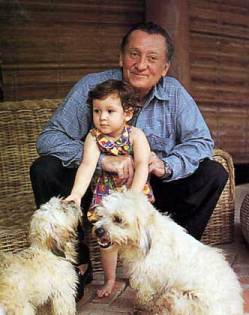 "I'm not an architect -- I am only a dreamer," says Robert, showing a visitor through the open, airy house in Rangoon's elite Golden Valley neighborhood. "I drew up the designs, and the Burmese structural engineers did the rest. But a house must reflect the soul. Most of the furniture we made ourselves, in our workshops. And here the art, the colors are so pleasant, so interesting. We wanted the house to be like Burma itself."
"I'm not an architect -- I am only a dreamer," says Robert, showing a visitor through the open, airy house in Rangoon's elite Golden Valley neighborhood. "I drew up the designs, and the Burmese structural engineers did the rest. But a house must reflect the soul. Most of the furniture we made ourselves, in our workshops. And here the art, the colors are so pleasant, so interesting. We wanted the house to be like Burma itself."
The result is an eclectic, fascinating, and constantly surprising environment, where delicate wooden celestial spirits dance among antique Chinese lanterns, exotic flowers blossom out of lacquered baskets, and a line of tiny Ninth-Century bronze elephants sits at the base of a serene, stone Buddha. Turn a corner, and there's a primitive, rough-hewn statue from one of Burma's remote tribal peoples, bedecked with stone-bead necklaces; turn again, and an intricately-carved, wild-eyed ogre brandishes a wooden sword at you from his perch atop an ornate table from Mandalay.
There are treasures and curiosities everywhere, set off dramatically against the simple, white walls and floors. But Robert insists the house is not a showcase -- he just enjoys living with things he loves. An elaborately embroidered elephant hood, for example, or the snarling head of a "pyinsa rupa" -- a mythical Burmese creature with the trunk of an elephant, the fangs of a lion, the scales of a fish, and the wings of a bird. There's a joyful abundance of sculpture, lacquerware, painting, and textiles throughout the house, often placed in arresting juxtapositions. Even the garden is eclectic: the Roberts collected plants from all over the country before starting work on the house itself.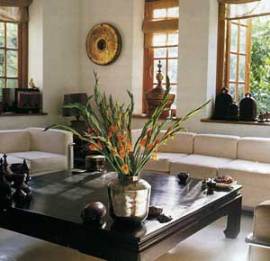 The collection reflects Burma's own rich mix of cultures, says Robert. There are more than a hundred different ethnic groups, each with its own distinct characteristics, and the sizeable Chinese and Indian communities have also left their mark. Echoes of the British colonial period still linger, along with the art and architecture of the Burmese royal dynasties. "Burma is a melting pot," the designer says. "I wanted to capture that."
The collection reflects Burma's own rich mix of cultures, says Robert. There are more than a hundred different ethnic groups, each with its own distinct characteristics, and the sizeable Chinese and Indian communities have also left their mark. Echoes of the British colonial period still linger, along with the art and architecture of the Burmese royal dynasties. "Burma is a melting pot," the designer says. "I wanted to capture that."
Robert is a natural at finding and displaying the beautiful things of the world; in fact, he made a career of it for more than a decade. During the 1960's and 70's, he shuttled between Europe and Asia promoting tourism and trade. As he travelled, he collected, and soon both his house in Paris (a bordello he restored in 1968) and a second home on the Indonesian island of Bali began to overflow with native artifacts and works of art.
"By chance, somebody asked me to build an exhibition in Paris on Bali," he recalls. "And I said, absolutely not -- I'm not competent for that." He tried his hand at it anyway, and the success of that first exhibit encouraged him to form Patrick Robert Associates, which designed cultural exhibitions for banks, museums, cities and foundations all over the world. "I was successful," he says. "Unfortunately, I became stupid and crazy, like all new managers. First one office, an assistant -- fine. Then ten offices, 150 people, an office in Zurich, an office in Tokyo -- it was absolutely crazy." When the economic downturn of 1991 hit, Robert was forced to shut down. He sold his house and collection and travelled, looking for a place, he says, "to stop and forget everything."
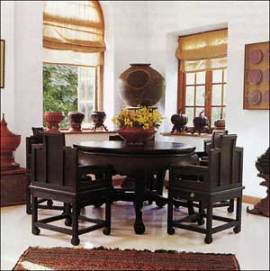 The search led him to Burma, and a new life. In 1992, he found an old Burmese teak house in Rangoon and helped convert it into the 49-room Pansea Hotel, which opened last year. He and Claudia formed the design company Traditions, which exports furniture and crafts -- Burmese style, interpreted through Robert's European eye -- throughout the world. They spend about half their time in Rangoon and half in Europe, helping to build cultural bridges between East and West.
The search led him to Burma, and a new life. In 1992, he found an old Burmese teak house in Rangoon and helped convert it into the 49-room Pansea Hotel, which opened last year. He and Claudia formed the design company Traditions, which exports furniture and crafts -- Burmese style, interpreted through Robert's European eye -- throughout the world. They spend about half their time in Rangoon and half in Europe, helping to build cultural bridges between East and West.
"Of course, we are trying to preserve and promote the art of this country," he says. "But this house is for living in. To have friends come and stay, enjoy a glass of wine, to dine together and talk -- that is happiness." As for the house itself, Robert says it will never be finished. He is constantly testing out new furniture designs, and new experiments in the art of living. An upstairs room with nothing but a stereo system and wall-to-wall mirrors? "For practicing the tango, of course!" he explains, with a mischievous grin. An intricately woven rattan high-chair in the kitchen? "I made it for my daughter -- not for me, yet," he laughs. "In a few years, maybe. But not now. There is still too much to do."

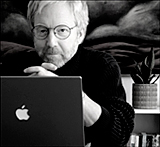
Reader Comments (13)
I tried the number a few times but was told that it was the wrong number.
Does Partick have an email contact address.
Thanks for your help anyway.
Alan
Thanks for response.
I was trying to see if Patrick could tell me where I could buy some the old-style planters' chairs , which I saw in a book on Burmese style featurung his house.
I'll have to look elsewhere !
Alan
Need to get in touch with Patrick. drop me an email.
Supreme
or anyone who has Patrick's contact can you please email to me? Thanks
Have met patrick many years ago I think 2004 or 2005 when I was in Yangon but has lost his contact.